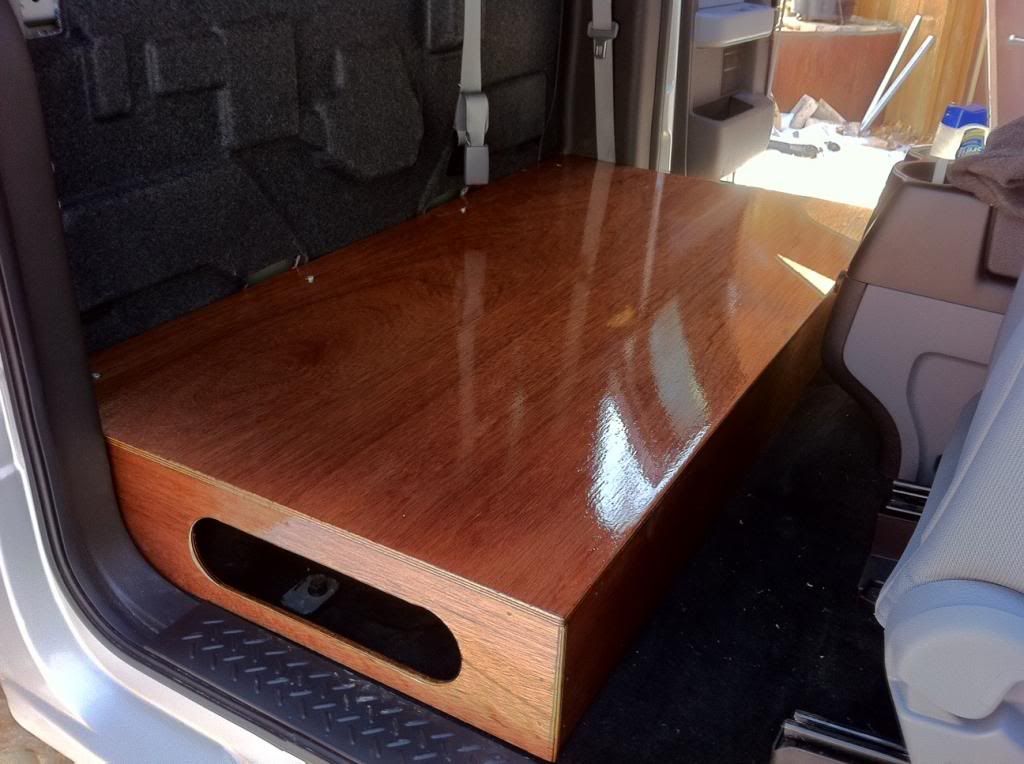Thanks for the drawer front details I - admire the way you are mixing wood, monstaliner, aluminum & epoxy/mixes. In pods8 great poptop build
http://www.expeditionportal.com/forum/threads/58926-POD-Homebuilt-foam-core-fiberglass-skin-pop-up-camper-build-thread/page27 he's leaning towards monstaliner for the whole exterior - is the monstaliner surface rough in a way to hold dirt & mold (when stored on the wet shadowed side of the garage for instance)? I'm sure you know the look in your neck of the woods...What's your experience with the stuff - what's it look like a couple years down the road?
I tried hard to deal with the tiny default photo size in photobucket - I got the general idea but miss the details...I'd love to study them closely if I could see them better, of course it would just lead to more questions... and I know it's more work for you (unless I'm missing something basic about making them bigger?)
Couple things stood out - for instance are there metal inserts in the ah...quarter knees (stern corner braces at gunnel height)? Looked slick & a great idea but I don't know how you'd do it...I'm trying to use more aluminum & copper in my work but don't have much experience working them.
Loved the abs or pvc "pipe clamps" - 100 clamps for pretty much free - perfect for epoxy bonding.
Nice to see somebody try & sink their boat in controlled conditions so they have 1/2 a clue when it happens unplanned...water looked cold...That's what led to your aft flotation bags I'd guess...
I'm somewhat familiar with outboards with jet drives - could you compare them to the Mud Buddy which I know nothing about?
Is the freighter your design? Keep up the good work. Moe
I had a flatbed I made sprayed with rhino and the only way I could clean it was with a pressure washer because the texture was so rough.
The texture with the monstaliner is more like a heavy orange peel.
My only experience with the monstaliner is on the canoe and it is only 1 year old.
As far as photobucket, I click the small pic and it gets big, then I click on the right or left side of the big pic to scroll ahead or back.
Yes, I hammer formed copper caps for the breasthook, quarter knees, inwales and spray rails.
If you figure out how to make the pics bigger, there is quite a few pics of the copper work to see how it is done.
Yes, the pipe clamps are cheap and have about the right tension for epoxy glue up.
I marked a bucket at 40# of water and counted them as I poured them in the boat.
At 2400# the water was just below the spray rails.
Then I climbed in and swamped it.
I also bolted enough blind flanges on the transom to simulate engine weight and center of gravity.
Then I rolled it to see how it was to right it and bail it.
The ice had just went off the lake and sure enough was cold.
The float bags are thwarts out of a raft of mine and were supposed to be temporary but work well.
The jet will run shallower water than the surface drive.
The jet needs to be up on step to run, so to carry the the weight the freighter can it takes about 150 hp.
The 23 hp surface drive burns about a gallon per hour, my 115 hp jet burns about 8 gallons per hour loaded heavy.
The surface drive is air cooled, no worries of water pump failure do to weeds, silt or running dry.
The jet is fast, the surface drive is slow.
The boat design belongs to Tim Marchetti of cnc routing and design out of Maine.
Thank you



